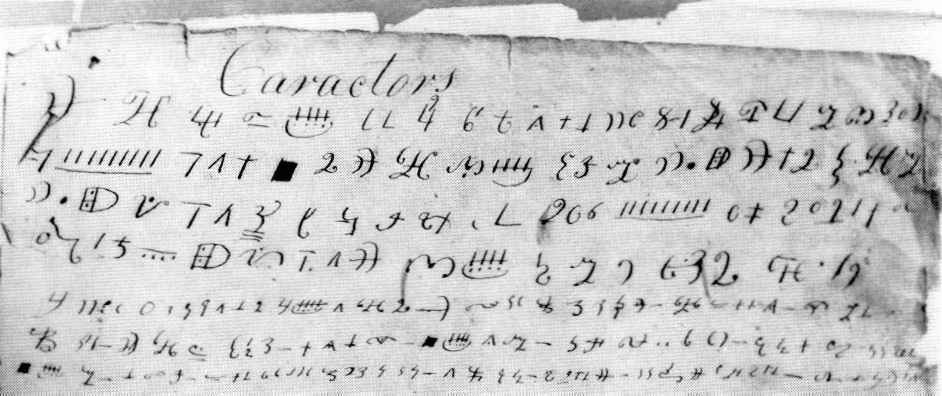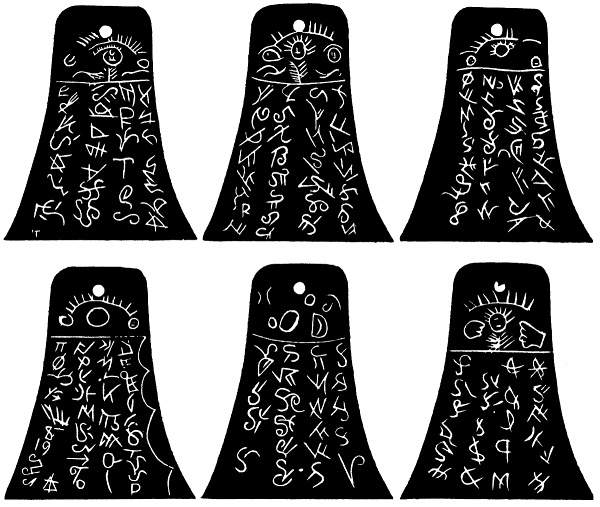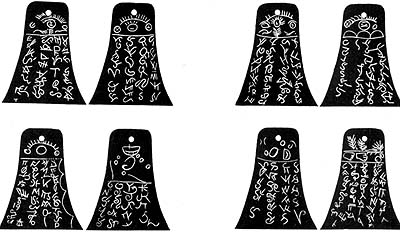Michael Price’s news story, “Why Written Languages Look Alike the World Over” in Science
magazine’s online edition (Sciencemag.org) might be of interest to
some readers here. He discusses a recent publication on the nature of
scripts used in written language. The study, published in Cognitive Science, finds
that scripts contain a vary high degree of vertical and horizontal
lines (e.g., our T and L) relative to oblique lines (as in our X or W).
Symmetrical characters, with either vertical or horizontal symmetry,
also occur more frequently than one would expect from chance, and
vertical symmetry (as in B or C) is more common than horizontal symmetry
(as in W or A). Examination of how scripts evolve suggests that these
features are present from the earliest stages of writing.
The study discussed is by Oliver Morin, “Spontaneous Emergence of Legibility in Writing Systems: The Case of Orientation Anisotropy,” Cognitive Science, 10 October 2017, DOI: 10.1111/cogs.12550. Abstract:
Cultural forms are constrained by cognitive biases, and writing is
thought to have evolved to fit basic visual preferences, but little is
known about the history and mechanisms of that evolution. Cognitive
constraints have been documented for the topology of script features,
but not for their orientation. Orientation anisotropy in human vision,
as revealed by the oblique effect, suggests that cardinal (vertical and
horizontal) orientations, being easier to process, should be
overrepresented in letters. As this study of 116 scripts shows, the
orientation of strokes inside written characters massively favors
cardinal directions, and it is organized in such a way as to make letter
recognition easier: Cardinal and oblique strokes tend not to mix, and
mirror symmetry is anisotropic, favoring vertical over horizontal
symmetry. Phylogenetic analyses and recently invented scripts show that
cultural evolution over the last three millennia cannot be the sole
cause of these effects.
With this in mind, it is
interesting to once again look at the Charles Anthon transcript to
see examples of the characters that Joseph Smith copied from some
portion of the gold plates for Martin Harris to show to some highly
educated folks to help Martin cope with his doubts.
When
Martin showed them to the scholar, Charles Anthon, Anthon allegedly
responded favorably. According to Harris, Anthon “said they were Egyptian, Chaldaic, Assyriac,
and Arabic” and that they were “true characters.” Whatever Anthon said,
Harris came away convinced that Joseph was not a fraud. To say that the
characters were Egyptian, Chaldaic, Assyriac, and Arabic, if accurately
quoted and sincerely meant, would seem to mean that Harris saw
similarities to these other scripts, and indeed, it’s not hard to see
many similarities. In light of Morin’s publication, part of the
similarities include a very high degree of vertical and horizontal
strokes, a low degree of oblique lines (curved lines were excluded in
the study), and a high degree of symmetrical characters, all typical of
many real scripts. However, in the small sample from the Anthon
Transcript, the symmetry is primarily horizontal, though there are some
characters with vertical symmetry.
After examining the Anthon characters, it is easy for a
naive viewer like me to see apparent similarities to numbering systems
in Demotic (like a long curved line for 100 and then vertical strokes
above it for multiples of 100) and also Mayan (the bar and dot system).
Probably coincidental, but I can sort of see why someone could say that
there are features like those of ancient Old World scripts, for they
have some common general features similar to what Morin observed.
Had Harris brought Anthon some of the fraudulent Kinderhook Plates, I wonder what his response would be?
These
characters to me just look a lot different than the various scripts
I’ve seen from the Old World. To me they appear to have a high emphasis
on oblique lines, contrary to Morin’s observation. I’m not saying his
findings represent an accurate test for distinguishing a lone forger’s
contrived script from a real civilization’s practical script that
developed according to common cognitive aspects of our brains, but it
may be a topic for further research. Just a fun tidbit to consider that may help explain why someone might feel the Book of Mormon characters resemble other ancient scripts they’ve seen.
FYI, Tolkien’s fun work in
developing the Tengwar script for Middle-earth
seems to do well in its abundance of cardinal strokes, but then it
seems to draw heavily on Tibetan and related scripts and is rooted in
his deep scholastic knowledge rather than being fabricated out of whole
cloth.
A hat tip to Jennifer Mangelson for alerting me to this Science story.
For some background on the fraudulent Kinderhook Plates and their relation or lack thereof to the Book of Mormon, see my related LDSFAQ page on Book of Mormon problems.













That the "Caractors" document is the Anthon transcript is dubious. As for translating this document, Jerry Grover seems to have made the most progress thus far:
academia.edu/19655755/Translation_of_the_Caractors_Document_Final_Printed_Publication_
Thanks. Grover has some interesting observations that merit discussion, but to me there seem to be some pretty big leaps on the way to a translation, so I'm skeptical, but appreciate much that he has done in his studies on various topics.
That's interesting, do you care to elucidate what those "pretty big leaps" are?
I only ask because I am currently updating the book and translation, and will be responding to comments raised since the book was written.
BTW, the study that is cited here excluded logographic languages (like Egyptian and Mesoamerican script) so would not be expected to be applicable to the Caractors Document.